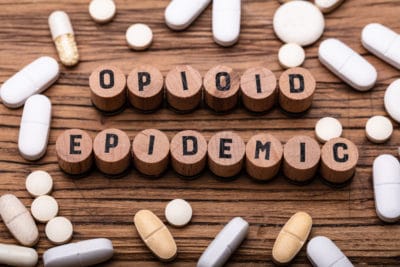 Abuse of and addiction to opioids and opiates is a rising concern across the nation — so much so that the term opioid crisis has been coined to describe the rising trends. According to the National Institute on Drug Abuse, more than 130 individuals die every day in the U.S. due to overdosing on these drugs. But what are they, and which opiates are most commonly abused? Find out more about these dangerous substances. If you’re struggling with an addiction to one of them, contact New Day Recovery today to discover more about opioid treatment options.
Abuse of and addiction to opioids and opiates is a rising concern across the nation — so much so that the term opioid crisis has been coined to describe the rising trends. According to the National Institute on Drug Abuse, more than 130 individuals die every day in the U.S. due to overdosing on these drugs. But what are they, and which opiates are most commonly abused? Find out more about these dangerous substances. If you’re struggling with an addiction to one of them, contact New Day Recovery today to discover more about opioid treatment options.
What Are Opiates?
Opiates are drugs naturally derived from the poppy plant that bind to receptors in your brain and body. They are also part of the opioid drug class, which encompasses both the natural and synthetic forms. Through the binding process, the substances alter how your brain and body react to various stimuli, changing the way you experience and deal with pain or stress. This is what causes the euphoria associated with an opiate high, but this interaction can be dangerous. It can impact your mood, your body’s ability to regulate its temperature and even your breathing capacity.
Opiates are also highly addicting for a number of reasons. One of the most powerful drivers is that the euphoric high is so pleasing and strong that people soon feel compelled to experience it again. The more drugs they use, the harder it is to get to this high, so someone may chase increasing amounts of opiates. Another reason they’re so addictive is that the physical changes they make in the body become status quo after a while. That means that if the drug isn’t in a user’s system, their body reacts as if something is wrong, which can lead to uncomfortable or even dangerous withdrawal symptoms.
Most Commonly Abused Opioids
Opiates are available in various forms, ranging from illegal street drugs to prescription medications. Here are some of the most abused forms of these drugs.
Popular Opiates:
- Morphine. Morphine is a naturally occurring pain reliever. While it’s used in medical applications to treat moderate or severe pain, it’s also a Schedule 2 drug because of its addictive properties. When used in pharmacological situations, morphine is strictly regulated and closely monitored to help reduce the risk that someone becomes addicted, though this can still happen.
- Heroin. Heroin is another common opioid that’s based on natural substances. This Schedule 1 street drug is actually a form of processed morphine. It typically takes the form of a brown or white powder that can be snorted, smoked or, in some formats, injected. Heroin itself is very addictive and dangerous, but the fact that people cut it with other substances makes it even more of a gamble.
- Fentanyl. Fentanyl is a synthetic opiate, which means that it’s man-made. Some versions of the drug can be up to 100 times more effective in treating pain than morphine, according to the Centers for Disease Control and Prevention (CDC). But the drug is also extremely addictive, and illicit forms — those made outside of the regulations of the pharmaceutical industry — can be extremely dangerous to take.
- OxyContinⓇ. This is a brand name for a generic drug known as oxycodone. It’s an opiate-based pain reliever that is commonly prescribed and can be addictive. Like the other drugs on this list, it’s a controlled substance.
- Vicodin. This prescription pain reliever combines hydrocodone — another opiate-based pain reliever — with acetaminophen. Vicodin, like OxyContin, is considered a Schedule 3 drug because of its addictive properties.
Getting Treatment for Opiate Addiction
No matter what opiate you may have started with or what drugs you’re abusing now, if you’re ready to quit and break free from the cycle of addiction, the New Day Recovery Addiction Center can help. Call us today at 330-953-3300 to find out about our residential drug programs, which include medically assisted detox to help with withdrawal symptoms as needed.




